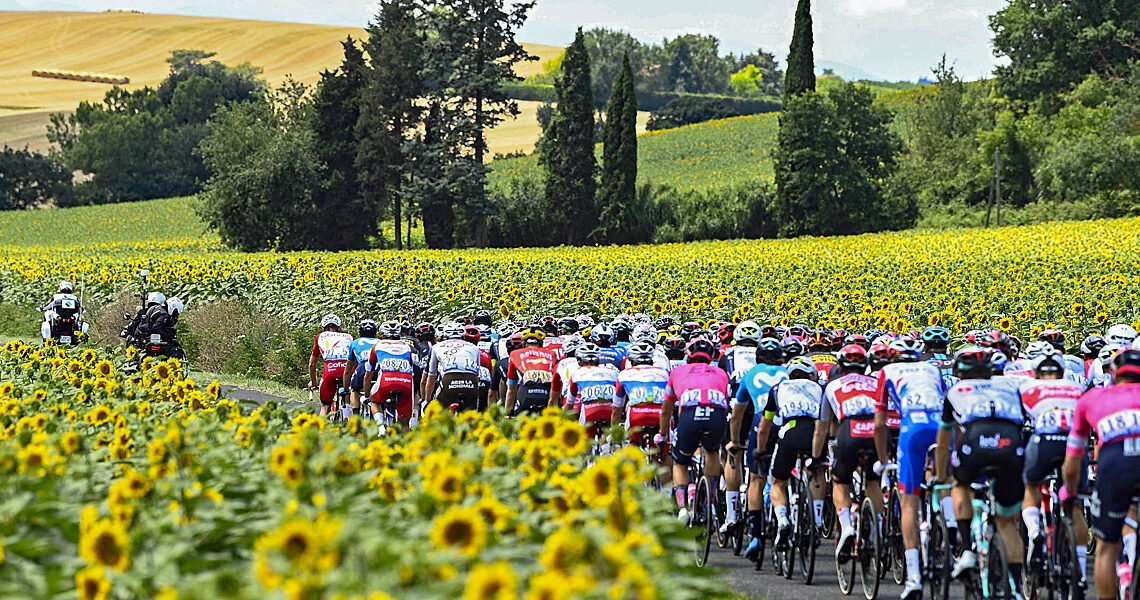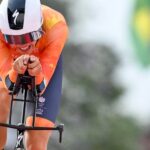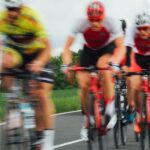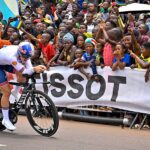
TOOLBOX: April showers might bring May flowers, but for cyclists, spring brings the Giro d’Italia and the itch to ride harder and longer. But if you want to avoid watching your fitness wilt like a neglected garden come July, it’s time to focus on the unsexy basics—Sleep, Nutrition, Strength Training, and Smart Riding. These aren’t shiny new hacks or secret formulas. They’re oatmeal-level boring. But done consistently, they’re the foundation of real, lasting gains. Think of them as your Seed, Soil, Sunshine, and Rain for cycling success.

Sleep – Not difficult, but very important
None of this is groundbreaking, or shiny, or sexy, or exciting. And that’s the problem. It’s boring. Like oatmeal. Or flossing every day, using your seatbelt, and making water your primary drink every day.
But they work, and work extremely well if you do them consistently.
Sleep
“Nothing good happens after 10pm”
I’d say this holds especially true for those of us getting up early to ride. Making sure you’re doing everything in your control to get between 7-9 hours of sleep every night, and to have a regular bedtime, is absolutely instrumental in helping you recover and adapt to your training rides…yet many of us bounce around our bedtimes as we try to balance work, family, and social commitments alongside our riding.
It’s been my experience that we can only really do 3 of the following with quality: Fitness, Social life, Work, Family, Sleep.
And if Sleep isn’t #1, all the others tend to suffer. (After all, who wants to hang out or do work with the cranky guy/gal?).
Consistent, regular quality sleep offers a whole host of benefits, too numerous to list here. A great read on the subject is Dr. Matthew Walker’s ”Why We Sleep”.
Bottom line: Go to bed at a regular (decent) time like a responsible adult if you want to improve your fitness and resiliency, or to function better as a human being.

Diets – How do you know what’s right?
Nutrition
Open up your social media today and you are immediately blasted with a huge variety of diets, supplements, and other items touted to be “research-based” and a “superfood”. How do you know what’s right?
Well, it can (and should) be extremely simple, but it ain’t easy.
Start by learning if you’re eating because you are actually hungry, or whether it is because you are stressed or lacking sleep.
A simple way to do this is by keeping a food journal for 3 days in a single week: 2 weekdays + 1 weekend day.
Don’t do all 3 in a row. Instead, alternate them to be one mid-week training day, your mid-week “ff day” (you do have at least one of those, right?), and a weekend training day.
When you write the journal we want to track 3 things:
- What did you eat
- How much
- Why?
It’s the last one that can be tricky, as you’ll really want to take a good 10-second pause before you eat to answer “Am I eating this because I’m hungry, bored, or stressed?”.
Most of us know exactly what we should be doing, but we just don’t stick to it. This little journal is a great way to keep us honest and on target.
I had a great conversation about sports nutrition for performance with Dr. Namrita Brooke, which you can listen to here, where we go a little deeper.

Strength training throughout the season
Strength Training
Our culture of cycling has (mostly) turned the corner on strength training, as these days a growing majority of cyclists do some kind of resistance training…at least in the winter. However, if you want to reap the big rewards from your work pumping iron, you’re going to need to do some kind of strength training throughout the season.
Many mistakenly think this means light weight, high reps, and “core stability training”, but most of which completely misses the mark of what you need in the heights of your riding season.
Rather, what you need mid-season is to lift heavy things (relative to how it feels to you, not the actual weight), in small amounts, in a way that will help you not only keep your strength gains from the winter, but also help drive your in-sport recovery to new highs, and thus spinning your “fitness flywheel” even faster!
All that for just a little work 1-2 days a week, no more than 45 minutes.
For those curious, I dive deep into what TRUE “Core Stability Training” is, in this article I did for the TrainingPeaks Coaches website.

Quality, not quantity
Riding: More is not Better, Higher Quality is Better
Quite possibly the biggest mistake I made as I “got serious” about my riding fitness way back when, before the iPhone was invented, was thinking that more was better: more hours on the bike, more interval work, more intensity
Unfortunately, I rode myself right into true, proper overtraining. Yes, I was that bull-headed, and yes, I knew better. Mind you, this was before Strava became “a thing”, and before social media was plum-full of everyone’s PR’s and best ever rides…It was all me and myself (Oh, to be young again!).
While it took me a good 12-15 months to climb out of the massive hole I made for myself, it was an absolutely invaluable lesson to learn, and part of what pulled me into coaching cyclists, as I saw a number of my friends constantly walking that line. Thankfully none of them was as stupid or hard-headed as me, and when I opened up about how much of an idiot I was, and how I could help them see far better results doing less, many of them said yes to my coaching them.
And the results were fantastic!
But there was this constant conversation of “shouldn’t I be riding more?” This is where my blatant disregard for common sense in my own training worked to help them, and instead of getting dragged into the “more is better”, they fully bought into the “Train Smarter, Not Harder” mantra. This not only brought them wonderful results on the bike, but also saw their social lives blossom moreso than other riders, since they weren’t completely gobsmacked by their training each week.
Instead of thinking “more time on the bike” or “more interval work” is better, aim for higher quality, which will present itself in the following ways:
- Smoother power through the entire ride
- Low power/ easy pedaling during rest intervals, riding better and more repeatable (or correct for the effort) power outputs for your higher intensity efforts
- Adding another repetition (or two) on those (rare) days where everything is firing on all 8 cylinders
- Doing the bare minimum of repetitions on those (rare) days where nothing is firing well
- Going home/ staying home on the days your body is telling you to REST (doing chores/house repairs/yard work does not count!)
Conclusion
Everyone is looking for the “latest” scientific research backed training approach, interval, or powder to help them improve their fitness…but the answers so often lie in the very simple, bland, basics, which many of us foo-foo as being “not it”.
They are it, but they just won’t wow your friends and fellow riders. In fact, you can tell them every single thing you do to get these fantastic fitness/results, and their response will, more often than not, be: “Seriously, what’s the secret?”.
To which you can now answer: “I’m sorry, what was the question again?”
The post The Boring Secrets to Better Cycling: Sleep, Food, Strength & Smarts appeared first on PezCycling News.




